When you hear the word ‘bankruptcy’ it’s easy to think the worst. The truth is bankruptcy can be one of the quickest and most practical ways to escape crushing debt you can’t hope to pay. It can provide great relief and offer a way to move forward.
Bankruptcy is a formal, legally binding process that is administered by a Licensed Insolvency Trustee (“LIT” or “Trustee”) to give you protection from unsecured creditors.
If you complete all of the required duties: good news! You will receive a discharge from bankruptcy and are no longer required to pay your included debts. You will get a completely fresh start and you won’t be harassed by creditors. However, bankruptcy does have its disadvantages (see below).
A personal bankruptcy is designed to provide debt relief for those who are unable to pay their debts as they become due, or are otherwise insolvent. In other words, those who have more debt than they can currently repay. To qualify:
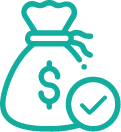
Once discharged, you’re no longer responsible for repaying debt included in the bankruptcy.
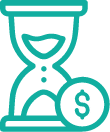
Proceedings typically take 9 months to 3 years to resolve – far quicker than other debt relief programs.

Full legal protection from unsecured creditors.
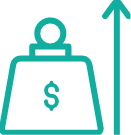
There is no limit to the amount of debt that can be included in a bankruptcy.
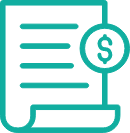
Typically, a monthly minimum fee must be paid to the LIT for administering the process.
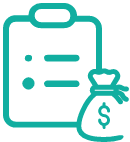
Canada Revenue Agency tax debt can be included in a bankruptcy filing.
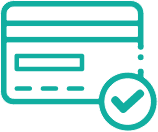
A bankruptcy will appear on your credit rating longer, impacting your ability to get loans, credit cards or lines of credit (see below).
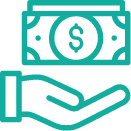
Assets may need to be liquidated if you cannot buy them back from the bankruptcy estate. Don’t worry, the laws in Alberta are very fair and not all assets are impacted.
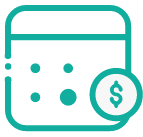
Payment terms and length can be extended or shortened if your financial situation changes.
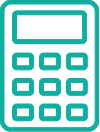
Any tax refunds for the year prior to bankruptcy and year of bankruptcy are paid to the LIT for the benefit of your creditors.
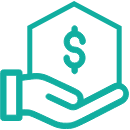
If you receive an inheritance or win a lottery while you are bankrupt, money/assets become the property of the bankruptcy estate.
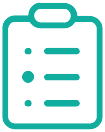
You’re required to report any income and expenses monthly to the LIT, but these normally aren’t shared with your creditors.
When you file for bankruptcy, your LIT administers what is called your bankruptcy estate. The LIT collects monthly payments from you, either a minimum monthly fee or surplus income (explained below) and these amounts are held In Trust. The LIT will also review your assets to determine what must be paid into the bankruptcy estate and you will be given the chance to buy back any assets of value, with proceeds also paid to the estate and held In Trust (see below). At the end of the bankruptcy, all monies in Trust are distributed to your unsecured creditors.
Unsecured creditors do not have specific collateral or security against the debt owed to them (eg. when you get a car loan, the car is collateral that can be repossessed if you default – so in this case, the creditor is ‘secured’).
During the bankruptcy, Canada’s two Credit Bureaus (Equifax and TransUnion) will report each account included in the bankruptcy as an “R9” which is an insolvency rating. The bankruptcy alert will remain on your bureau for 6 years from the date of discharge for a first bankruptcy and 14 years from the date of discharge for a second or subsequent bankruptcy.
Note: Not all creditors report to the same bureau, so pulling one report may not capture all your debts.
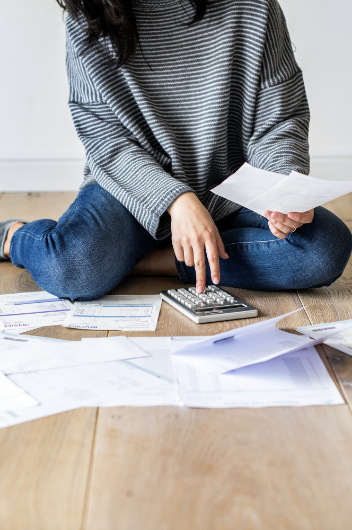
A bankruptcy will cover a wide range of unsecured debt (ie. debt without collateral). While restrictions apply, a bankruptcy can include the following:
*Conditions and restrictions apply. Some of these debts will survive any insolvency process, but your Trustee will explain what pertains to your unique circumstances.
Secured debt is debt that is backed by collateral. For example, when you get a car loan – the car
acts as collateral. If you default on your loan – the creditor can repossess the vehicle. Unsecured debt is not backed by collateral. If you decide that you don’t want to continue paying on your car loan and want to return the vehicle to the dealer, Bankruptcy is one way to deal with the shortfall.

You must choose a Licensed Insolvency Trustee (also known as an LIT or a Trustee) to administer the bankruptcy process on your behalf. LITs are highly trained professionals and are the only ones authorized to administer bankruptcies. Here are a few things you need to know:
All Payments are made to the LIT
All bankruptcy payments are made to the LIT. Funds are held In Trust. The LIT distributes payments to your unsecured creditors at the conclusion of your bankruptcy.
LITs are Neutral
The LIT cannot take sides between you and your creditors. They will ensure that the process is fair and that all legal requirements are met – like a referee.
Not all LITs are the Same
That said, you will want to choose a caring, compassionate LIT who is committed to guiding you through this difficult process.
They Hold all of your Assets
Your LIT is responsible for listing any assets of value and coordinating a payment plan that allows you to repurchase assets (see below).
A Portion of Payments covers the LIT’s Expenses
You are required to pay your LIT for administering your bankruptcy.
When you get heavily into debt and file for bankruptcy, there is a risk that you will not be able to keep some of your assets (items of value you own outright). This may include vehicles, jewelry, expensive fashion collections, high-end home electronics and more.
The good news is that the goal is not to take the clothing off your back and leave you penniless.
You are legally required to disclose all assets. Your LIT will verify your list of assets, their values and any applicable exemptions. Typically they will use “Garage Sale” values.
The intent is never to seize all the assets of a bankrupt person, but rather set up a payment plan if you wish to keep your assets. You are given the option to “repurchase” the non-exempt equity from your bankrupt estate.
If you cannot repurchase the amount payable in a timely manner, it might make more sense for the LIT to sell or liquidate certain assets to assist you in obtaining your discharge within the legislated timeframe.
Certain investment assets are 100% protected from seizure. This includes:
Other investment assets ARE NOT protected and can be awarded to creditors to help cover the debt you owe. This includes:
Fact: The goal of a bankruptcy is NOT to leave you penniless and take everything. In most cases, your LIT can help you retain unsecured assets: from furniture to clothing to personal items (see above).
Fact: The process takes 9-36 months to complete and involves regular payments to an LIT to administer the process on your behalf.
Fact: Anyone can file for personal bankruptcy if they meet the requirements. If you have higher and stable income and assets to protect, a Consumer Proposal may be the preferred option.
Fact: While it is automatic upon your filing, creditors or other interested parties can make applications to Court to annul the filing, if it was done improperly, assets were not disclosed to the LIT, or otherwise.
Fact: If you’re overwhelmed by debt, bankruptcy isn’t the only way out. In Alberta, other options include a Consumer Proposal, Orderly Payment of Debt, Debt Management Program and Division 1 Proposal. Learn more here.
Fact: A bankruptcy can have a long-term impact on your credit rating and could prevent you from applying for loans, credit cards and mortgages for years to come. In addition, you could lose assets.
After completing a bankruptcy, some people can face future struggles with debt. It is possible to file for multiple bankruptcies. However, the implications become more restrictive each time. For details, speak with an LIT.
For many people (especially those with significant assets and a greater ability to repay debt), a Consumer Proposal offers several advantages. Get all of the details here:
There are several steps in the bankruptcy process. Your LIT will explain the process in greater detail.
If you have been involved in a previous bankruptcy or have more than $200,000 of personal debt owing to Canada Revenue Agency, speak with an LIT to learn more.

Did you know that as many as 10% of those who file for bankruptcy never complete the process?
By filing for bankruptcy and not completing your duties (and remaining undischarged), you may:
Who should you talk to?
If you are in this situation, we strongly recommend you speak with a Licensed Insolvency Trustee (LIT) at BNA today.
Who not to talk to:
A lawyer may not be able help you get out of a bankruptcy or obtain a discharge once it has been filed. You’ll usually need an LIT. If the original LIT you worked with didn’t give you the personal attention and service you need, BNA is here to help.
Contact us for a free, no-obligation consultation. Whether your first call or second opinion, we’re here to help.